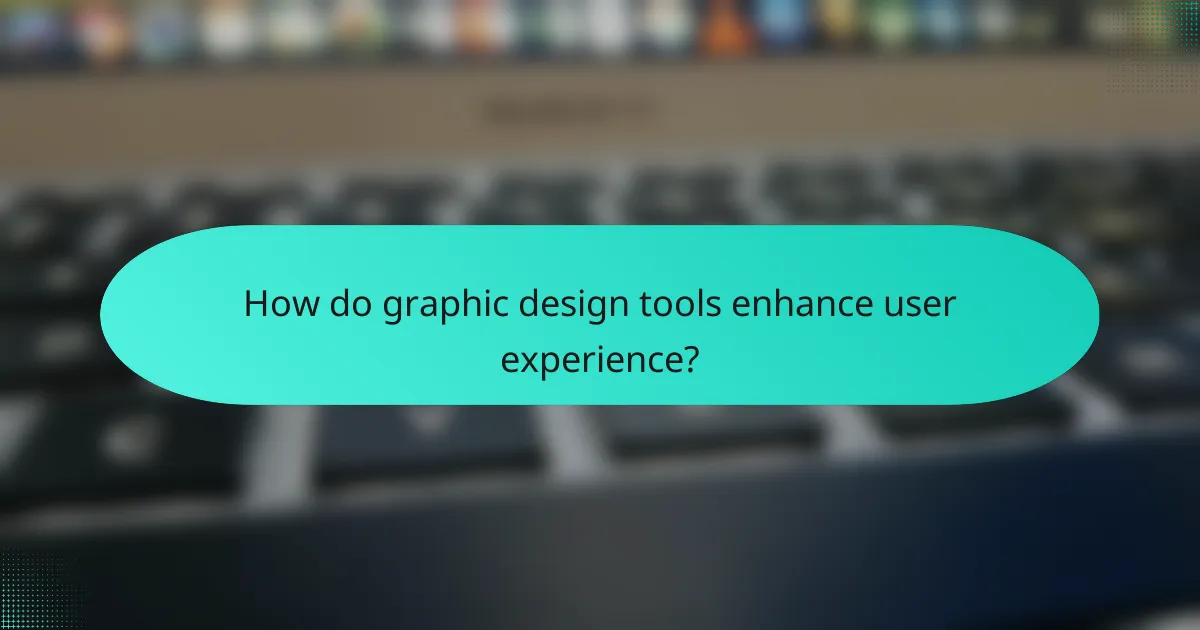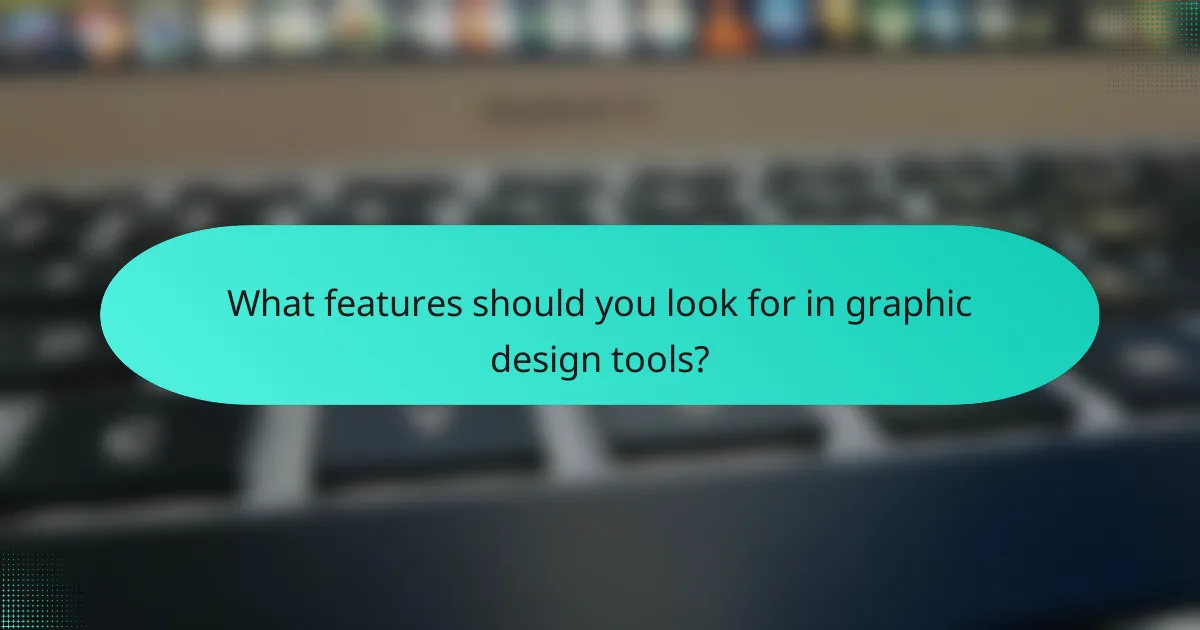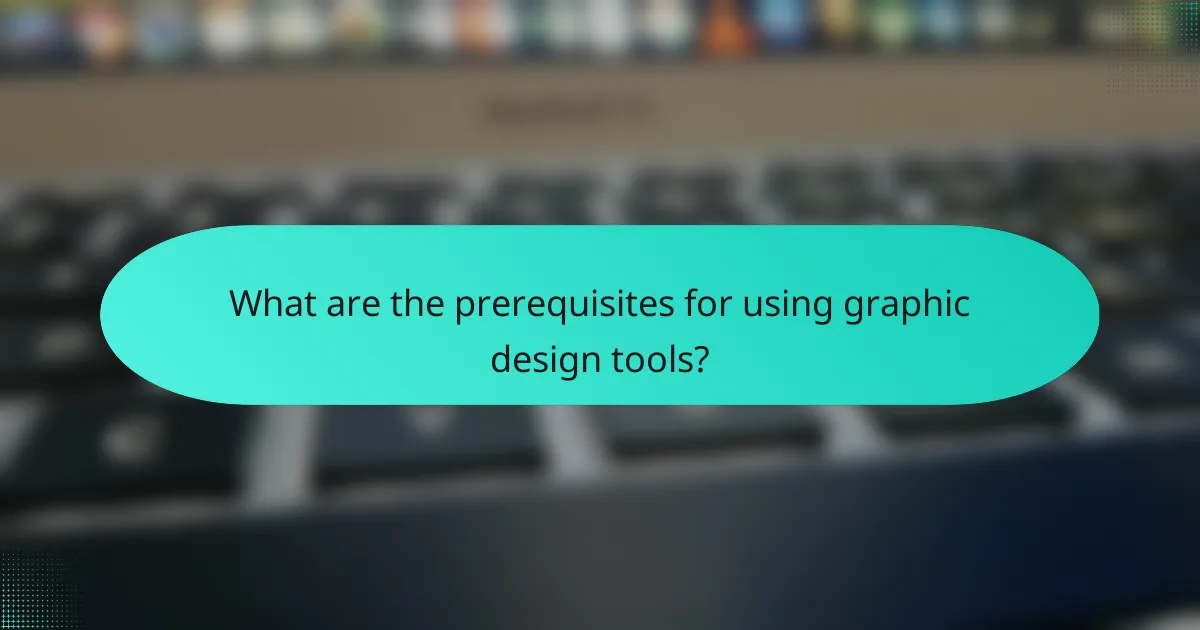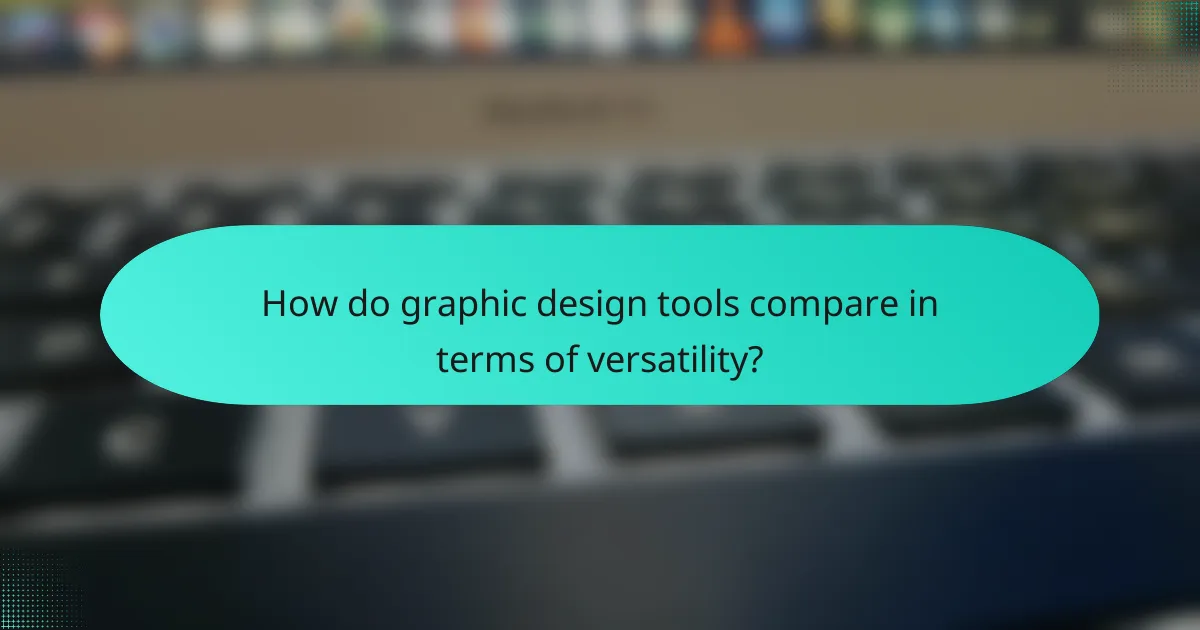In the world of graphic design, the right tools can make all the difference in achieving professional results. User-friendly interfaces combined with versatile features empower designers to create stunning visuals efficiently. Whether you are working on vector graphics or layout designs, choosing the right graphic design tools can enhance your creativity and streamline your workflow.

What are the best graphic design tools for professionals?
The best graphic design tools for professionals combine user-friendly interfaces with versatile features to produce high-quality results. These tools cater to various design needs, from vector graphics to layout design, ensuring that designers can work efficiently and creatively.
Adobe Creative Cloud
Adobe Creative Cloud is a leading suite of graphic design tools that includes Photoshop, Illustrator, InDesign, and more. Each application offers powerful features tailored for specific tasks, such as photo editing, vector design, and layout creation.
Consider the subscription model, which provides access to the latest updates and cloud storage. However, the cost can be significant, especially for freelancers or small businesses, so weigh the investment against your design needs.
Canva
Canva is an accessible graphic design tool ideal for both beginners and professionals. It offers a drag-and-drop interface with a vast library of templates, images, and fonts, making it easy to create visually appealing designs quickly.
While Canva is user-friendly, it may lack the advanced features found in more specialized software. It’s perfect for social media graphics, presentations, and marketing materials, but for intricate designs, you might need to complement it with other tools.
Affinity Designer
Affinity Designer is a cost-effective alternative to Adobe products, providing robust vector and raster design capabilities. It is known for its smooth performance and one-time purchase model, making it appealing for budget-conscious designers.
With features like real-time performance and a user-friendly interface, Affinity Designer is suitable for creating illustrations, branding, and UI design. However, it may not have the extensive community support or resources available for Adobe users.
CorelDRAW
CorelDRAW is a versatile graphic design tool that excels in vector illustration and layout design. It offers a range of features, including advanced typography tools and a customizable workspace, catering to both novice and experienced designers.
CorelDRAW’s licensing options include a one-time purchase or subscription, providing flexibility based on your budget. It is particularly popular among print designers and those working with large-format graphics.
Sketch
Sketch is a design tool primarily focused on user interface and web design. Its vector-based approach allows for precise design work, making it a favorite among UI/UX designers.
While Sketch is powerful, it is only available for macOS, which limits its accessibility. The tool supports plugins and collaboration features, enhancing productivity, but users should be aware of the learning curve associated with its advanced functionalities.

How do graphic design tools enhance user experience?
Graphic design tools significantly enhance user experience by providing intuitive interfaces, customizable features, and collaboration options. These elements help users create professional-quality designs with ease, regardless of their skill level.
Intuitive interfaces
Intuitive interfaces streamline the design process by making tools easy to navigate. Users can quickly access features without extensive training, allowing them to focus on creativity rather than technicalities. For example, drag-and-drop functionality enables users to manipulate elements effortlessly.
Look for tools that offer customizable workspace layouts, which can further enhance usability. This allows users to arrange their most-used features in a way that suits their workflow, improving efficiency and satisfaction.
Customizable features
Customizable features allow users to tailor tools to their specific needs, enhancing the design experience. Options like adjustable templates, color palettes, and typography settings enable designers to create unique visuals that align with their brand identity.
When selecting a graphic design tool, consider the extent of customization available. Tools that support plugins or additional resources can expand functionality, offering even more versatility for various projects.
Collaboration options
Collaboration options are essential for teams working on design projects. Many graphic design tools now include features that facilitate real-time collaboration, enabling multiple users to work on a project simultaneously, which can significantly speed up the design process.
Look for tools that offer cloud storage and sharing capabilities, allowing team members to access and edit designs from anywhere. This flexibility is particularly beneficial for remote teams, ensuring that everyone can contribute effectively regardless of location.

What features should you look for in graphic design tools?
When selecting graphic design tools, prioritize user-friendly interfaces, versatile features, and the ability to produce professional results. Look for tools that streamline your workflow while offering a range of functionalities to meet diverse design needs.
Versatile templates
Versatile templates are essential in graphic design tools as they provide a foundation for various projects, from social media graphics to marketing materials. A good tool should offer a wide selection of customizable templates that cater to different styles and formats.
When evaluating templates, consider their adaptability. Look for options that allow you to easily modify colors, fonts, and layouts to fit your brand identity. Tools that offer templates for specific industries can save time and enhance creativity.
Export options
Robust export options are crucial for ensuring your designs can be used across various platforms. A quality graphic design tool should support multiple file formats, such as PNG, JPEG, PDF, and SVG, to accommodate different needs.
Check if the tool allows for high-resolution exports, especially for print materials. Additionally, consider whether it offers options for optimizing images for web use, which can significantly improve loading times and user experience.
Integration capabilities
Integration capabilities enhance the functionality of graphic design tools by allowing them to work seamlessly with other software. Look for tools that can connect with popular applications like Adobe Creative Suite, content management systems, and social media platforms.
Effective integration can streamline your workflow, enabling you to import assets directly or share designs without hassle. Evaluate whether the tool supports plugins or has an API for custom integrations, which can further enhance its versatility.

How do pricing models vary for graphic design tools?
Pricing models for graphic design tools can differ significantly, impacting how users access and pay for these resources. Understanding these variations helps users choose the right tool based on their budget and needs.
Subscription-based pricing
Subscription-based pricing is a common model where users pay a recurring fee, typically monthly or annually, to access graphic design tools. This model often includes regular updates and new features, ensuring users always have the latest version. Prices can range from around $10 to $50 per month, depending on the tool’s capabilities and the level of service provided.
One advantage of subscription pricing is flexibility; users can cancel at any time without a large upfront investment. However, long-term costs can accumulate, so it’s essential to evaluate how often you will use the tool.
One-time purchase options
One-time purchase options require users to pay a single fee to own the software indefinitely. This model is appealing for those who prefer not to commit to ongoing payments. Prices for one-time purchases typically range from $50 to several hundred dollars, depending on the software’s complexity and features.
While this model provides ownership, it may not include future updates or support, which could lead to additional costs later. Users should consider whether they are comfortable with potentially outdated software down the line.
Freemium models
Freemium models allow users to access basic features of graphic design tools for free, with the option to upgrade to a paid version for advanced features. This model is beneficial for beginners or those who want to test a tool before committing financially. Many popular design tools use this model, offering a range of free functionalities.
However, users should be cautious of limitations in the free version, such as watermarked exports or restricted access to premium assets. It’s wise to assess whether the free features meet your needs or if the paid upgrade is necessary for your projects.

What are the prerequisites for using graphic design tools?
To effectively use graphic design tools, users should have a foundational understanding of design principles and access to suitable hardware. These prerequisites ensure that users can navigate software efficiently and produce high-quality designs.
Basic design knowledge
Having basic design knowledge is crucial for utilizing graphic design tools effectively. Familiarity with concepts such as color theory, typography, and layout can significantly enhance the quality of your work. Understanding these principles allows users to make informed decisions that lead to visually appealing results.
Additionally, knowing how to use design elements like grids and white space can improve composition. Beginners can benefit from online courses or tutorials that cover these fundamental concepts, providing a solid foundation for more advanced techniques.
Hardware requirements
Graphic design tools often require specific hardware to function optimally. A computer with a decent processor, sufficient RAM (typically at least 8GB), and a good graphics card is essential for smooth operation. This setup helps in handling large files and running complex software without lag.
For those working with high-resolution images or 3D design, consider investing in higher specifications, such as 16GB of RAM or more powerful GPUs. Additionally, a quality monitor with accurate color representation can greatly enhance the design experience, ensuring that colors appear as intended in the final output.

How do graphic design tools compare in terms of versatility?
Graphic design tools vary significantly in versatility, impacting how effectively users can create and edit designs. The best tools offer a range of features that cater to different design needs, from simple graphics to complex illustrations.
Adobe Creative Cloud vs. Affinity Designer
Adobe Creative Cloud is renowned for its extensive suite of applications, including Photoshop, Illustrator, and InDesign, making it highly versatile for various design projects. Users can easily switch between programs, leveraging the strengths of each to achieve professional results.
In contrast, Affinity Designer offers a more affordable one-time purchase option, focusing on vector and raster graphics. While it may not have the same breadth of features as Adobe, it provides powerful tools for users who prioritize cost-effectiveness without sacrificing quality.
Canva vs. Sketch
Canva is a user-friendly platform ideal for beginners and non-designers, offering a wide array of templates and drag-and-drop functionality. Its versatility lies in its ability to create social media graphics, presentations, and marketing materials quickly and efficiently.
Sketch, on the other hand, is tailored for digital design, particularly for web and mobile applications. It excels in collaborative features and design systems, making it a preferred choice for professional UI/UX designers. However, its learning curve may be steeper for those unfamiliar with design software.
